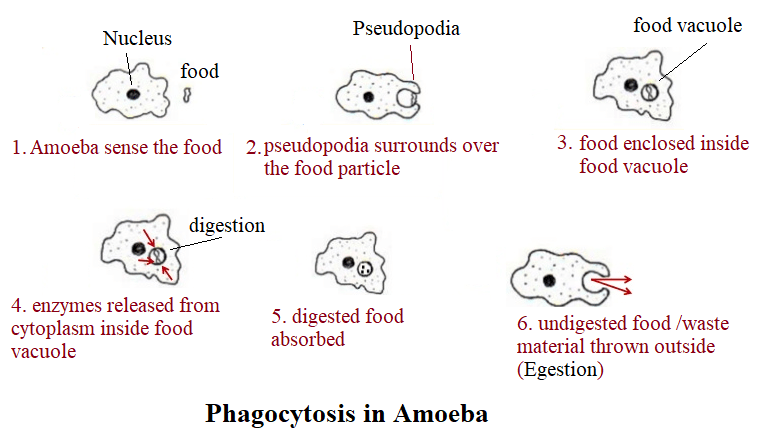THE FUNDAMENTAL UNIT OF LIFE NCERT Solutions
Table of Contents
Question 1:
Make a comparison and write down ways in which plant cells are different from animal cells.
Answer: Difference between plant cells animal cells –
| Sr. No. | Plant Cell | Animal Cell |
|---|---|---|
| 1 | They are larger in size (10mm-100mm). | They are relatively smaller in size (10mm-30mm). |
| 2 | Cell wall is present and made up of cellulose. | Cell wall is absent. |
| 3 | Lysosomes are absent or very few in number | Lysosomes are present in larger in number. |
| 4 | Plastids (chloroplast) are present. | Plastids are absent. |
| 5 | Plant cells store energy in the form of starch (polysaccharide). | Animals cells store food in the form of carbohydrates and glycogen. |
| 6 | Vacuoles are larger in size. | Vacuoles are smaller in size. |
Question 2:
How is a prokaryotic cell different from a eukaryotic cell?
Answer: Difference between Prokaryotic cells and Eukaryotic cells,
| Sr. No. | Prokaryotic cells | Eukaryotic cells |
|---|---|---|
| 1 | Size: generally small (1-10 µm). 1µm = 10-6m | Size: generally large (5-100 µm) |
| 2 | Organisms are always unicellular. | Organisms may be unicellular or multi-cellular. |
| 3 | Nucleus is absent. | Nucleus is present. |
| 4 | Cell division takes place through binary fission. | Cell division takes place through mitosis. |
| 5 | DNA arrangement is circular. | DNA arrangement is linear. |
| 6 | It contains a single chromosome. | It contains more than one chromosome. |
| 7 | Membrane bound cell-organelles are absent. | Membrane bound cell-organelles such as mitochondria, plastids, ER, lysosomes etc., are present. |
| 8 | Example: Bacteria, Blue-green algae | Example: Plant and animal cell |
Question 3:
What would happen if the plasma membrane ruptures or breaks down?
Answer: Plasma membrane acts as selective membrane for exchange of materials inside and its environment. Rupture or break down of plasma membrane would result in the exposure of cell component to the external environment and would ultimately result in cell death.
Question 4:
What would happen to the life of a cell if there was no Golgi apparatus?
Question 5:
Which organelle is known as the powerhouse of the cell? Why?
Answer: Mitochondria are known as the powerhouses of the cell. The energy required for various chemical activities is synthesised and released by the mitochondria in the form of ATP (Adenosine triphopshate) molecules. The body uses energy stored in ATP for making new chemical compounds and for mechanical work.
Question 6:
Where do the lipids and proteins constituting the cell membrane get synthesised?
Answer: In the Smooth endoplasmic reticulum (SER), lipids are synthesised and proteins are synthesised in Ribosomes present on the surface of the Rough endoplasmic reticulum (RER).
Question 7:
How does an Amoeba obtain its food?
Answer: Holozoic nutrition in Amoeba

Amoeba obtain its food through a process called endocytosis or phagocytosis. Amoeba has a flexible cell membrane and pseudopodia which is a temporary cytoplasmic arm like outgrowth. The pseudopodia helps amoeba in locomotion and engulfing food. Amoeba engulf in food using pseudopodia, which surrounds over the food particle forming a food vacuole. Inside the food vacuole, complex substances are digested (broken down into simpler substances), with the help of enzymes released from cytoplasm and soluble material are absorbed. The remaining undigested material is moved to the surface of the cell and thrown out. The complete phagocytosis process includes intake, digestion, absorption and egestion process.
Question 8:
What is osmosis?
Ans: Osmosis: Osmosis is the diffusion of water across a selectively permeable membrane from its higher concentration to a lower concentration.
Question 10:
Which type of cell division is required for growth and repair of body and which type is involved in formation of gametes?
Ans: Mitosis is the cell division required for growth and repair of body and meiosis is the cell division which is involved in formation of gametes.
MY YouTube Channel Link : 👉🖱 https://www.youtube.com/channel/UCGpC7nWE0-bBv9I53MM8qjQ
THE FUNDAMENTAL UNIT OF LIFE NCERT Solutions, THE FUNDAMENTAL UNIT OF LIFE NCERT Solutions, THE FUNDAMENTAL UNIT OF LIFE NCERT Solutions, THE FUNDAMENTAL UNIT OF LIFE NCERT Solutions, THE FUNDAMENTAL UNIT OF LIFE NCERT Solutions, THE FUNDAMENTAL UNIT OF LIFE NCERT Solutions